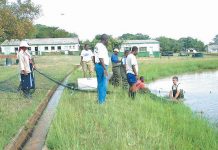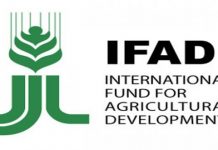[ad_1]
|
First row: L-R seated: Dr Iddya Karunasagar (India, FAO |
A group of aquatic microbiology and aquatic animal health experts from Croatia, India, Sri Lanka, the Netherlands, and the United States of America gathered for a 3-day book write-shop organized by the FAO Aquaculture Branch, Fisheries and Aquaculture Department in Frascati, Italy from 12-14 December 2016. This publication “Responsible Management of Bacterial Diseases in Aquaculture” contains 10 bacterial disease groups belonging to six gram-negative bacteria (e.g. vibriosis, aeromonasiasis, edwardsiellosis, pseudomonasiasis, flavobacteriosis, infection with intracellular bacteria) and four gram-positive bacteria (e.g. mycobacteriosis, streptococcosis, renibacteriosis and infection with anaerobic bacteria) consisting of some 40 pathogens considered as major bacterial diseases (based on a set criteria) of cultured finfish, crustaceans and molluscs in fresh and marine waters, some of which have zoonotic potential.
This publication covering four chapters (1. Introduction; 2. Bacterial diseases: general considerations; 3. Bacterial diseases: pathogen-specific considerations; and 4. Issues and challenges in managing bacterial diseases in aquaculture) and intended to a wide range of users, is being developed in recognition of the need to responsibly manage bacterial diseases in aquaculture, to reduce the use of antibiotics and thus avoid resistance, as well to find alternatives to antibiotics. It is expected that the book will be released in 2017.
Further information can be obtained by writing to [email protected]
[ad_2]
Source link




